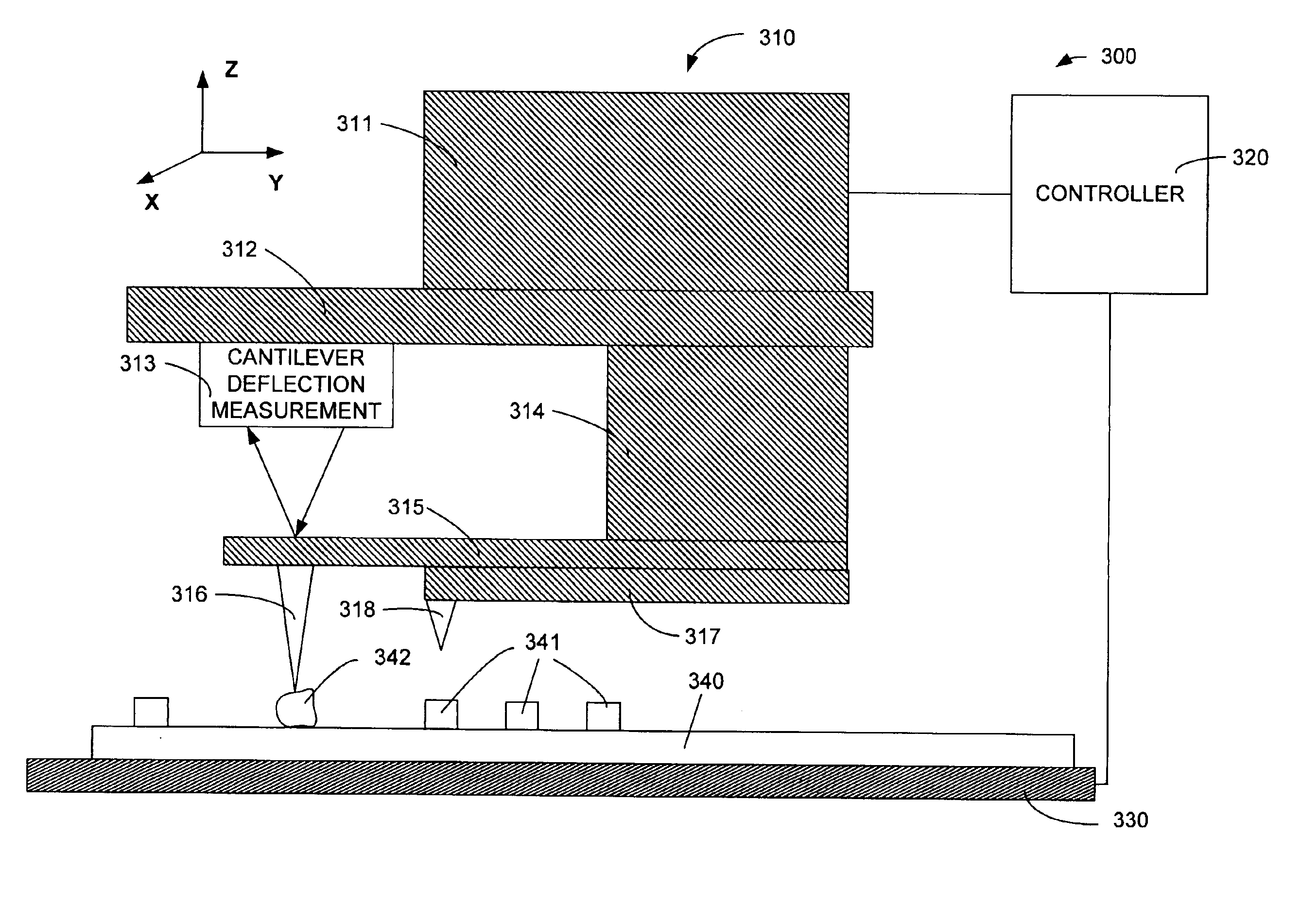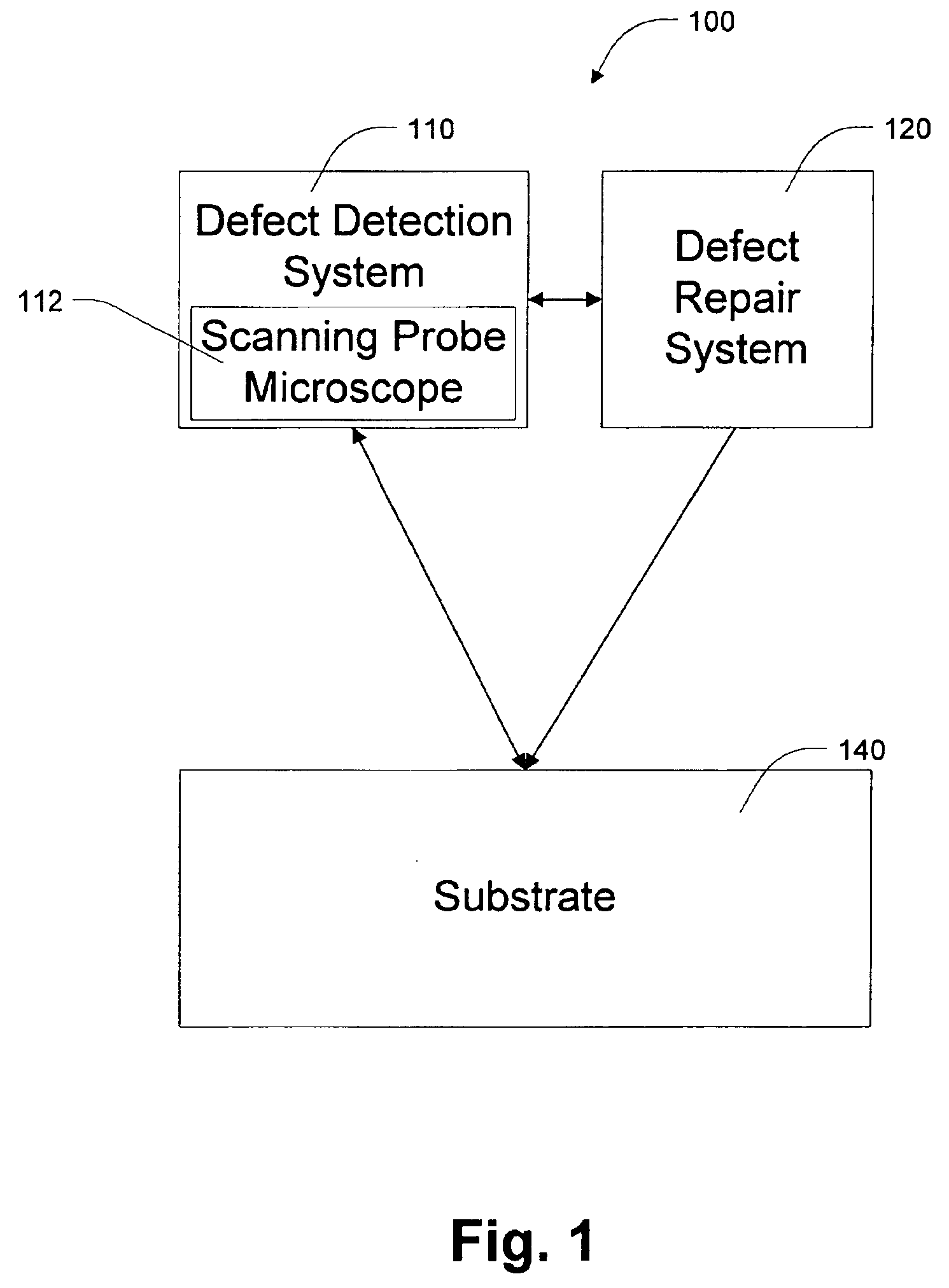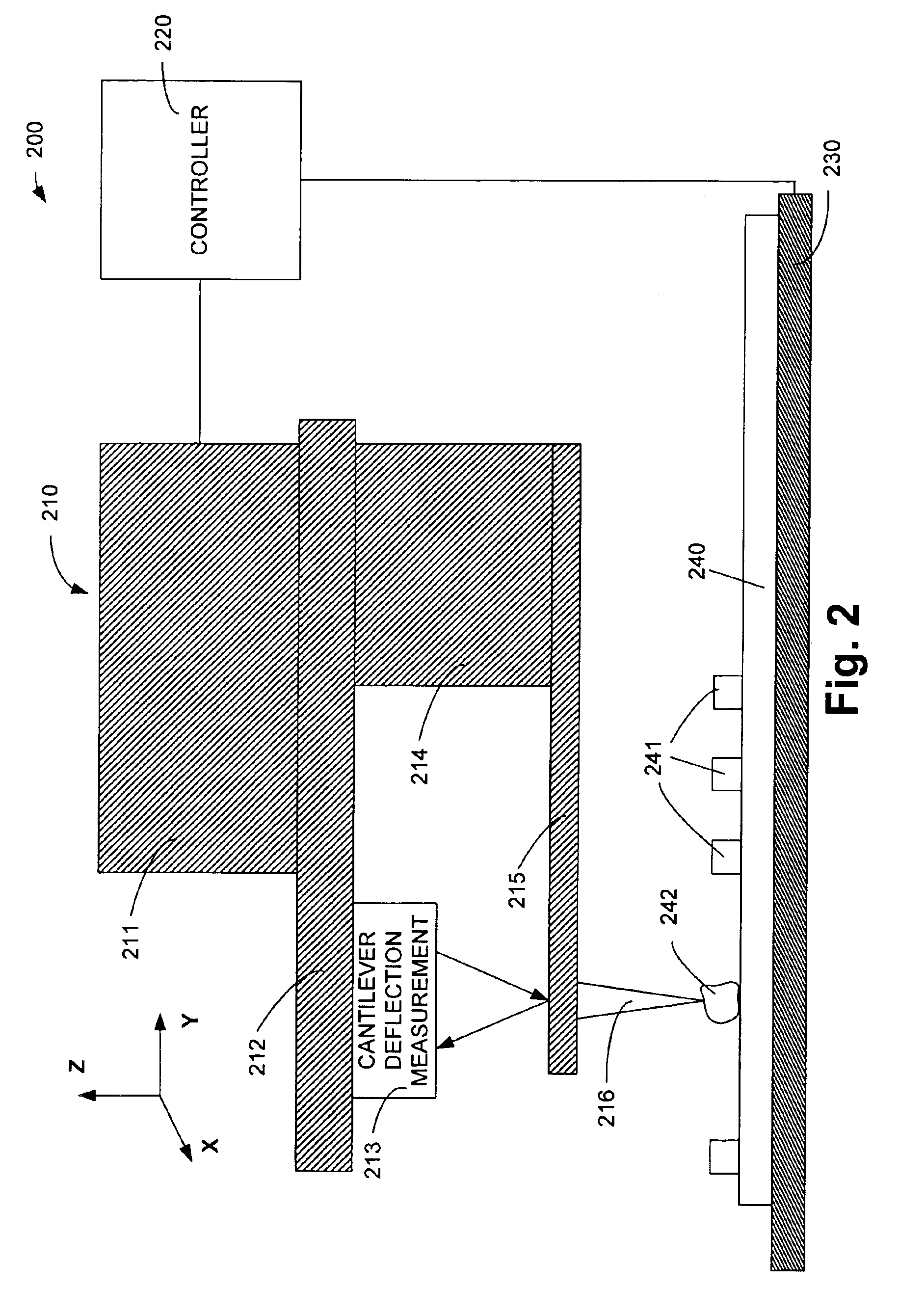Use of scanning probe microscope for defect detection and repair
a scanning probe and microscope technology, applied in semiconductor/solid-state device testing/measurement, instruments, nuclear engineering, etc., can solve the problems of processing silicon wafer defects, less progress in repairing defects, and defects in processed silicon wafers. achieve the effect of precise correction of defects
- Summary
- Abstract
- Description
- Claims
- Application Information
AI Technical Summary
Benefits of technology
Problems solved by technology
Method used
Image
Examples
Embodiment Construction
[0021]FIG. 1 is a high level schematic of a system 100 according to one aspect of the present invention. System 100 includes defect detection system 110 and defect repair system 120, which may be combined in one apparatus. Defect detection system 10 includes scanning probe microscope 112. Defect repair system 120 repairs defects in substrate 140 at locations determined by defect detection system 10. Defect detection system 10 may transfer a defect map to defect repair system 120 or, where the systems are combined, may repair defects using scanning probe microscope 112. By combining defect repair with a scanning probe microscope's sensitive defect location ability, system 100 is able to carry out very precise repairs.
[0022]While the invention can be applied to any type of substrate, it is applied in particular to semiconductor substrates. A semiconductor substrate includes a semiconducting material, such as silicon. In addition to a semiconducting material, the substrate may include ...
PUM
| Property | Measurement | Unit |
|---|---|---|
| normal force | aaaaa | aaaaa |
| normal force | aaaaa | aaaaa |
| normal force | aaaaa | aaaaa |
Abstract
Description
Claims
Application Information
 Login to View More
Login to View More - R&D
- Intellectual Property
- Life Sciences
- Materials
- Tech Scout
- Unparalleled Data Quality
- Higher Quality Content
- 60% Fewer Hallucinations
Browse by: Latest US Patents, China's latest patents, Technical Efficacy Thesaurus, Application Domain, Technology Topic, Popular Technical Reports.
© 2025 PatSnap. All rights reserved.Legal|Privacy policy|Modern Slavery Act Transparency Statement|Sitemap|About US| Contact US: help@patsnap.com



